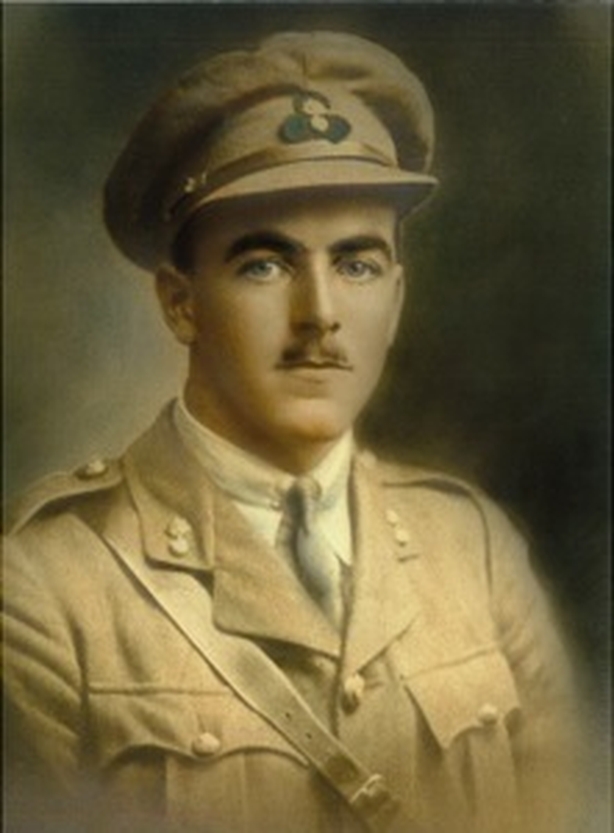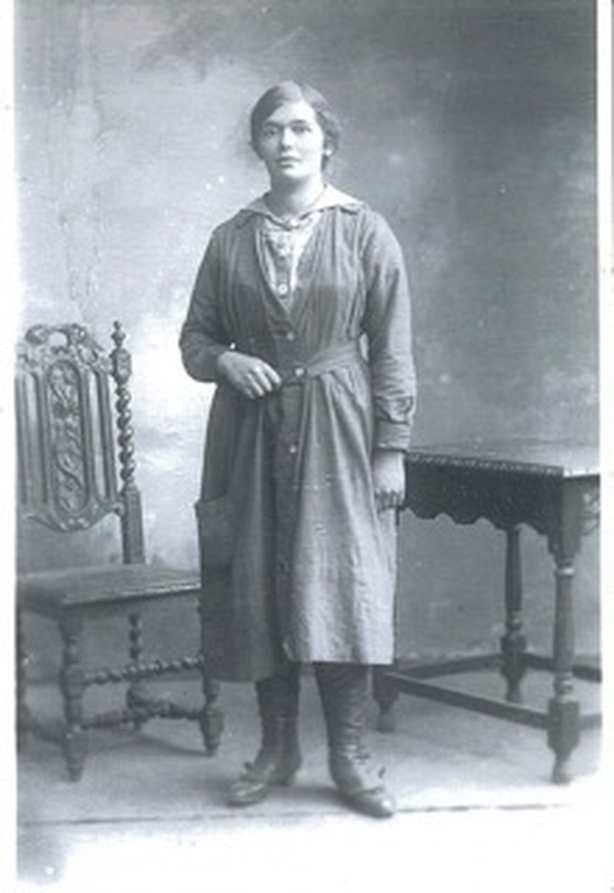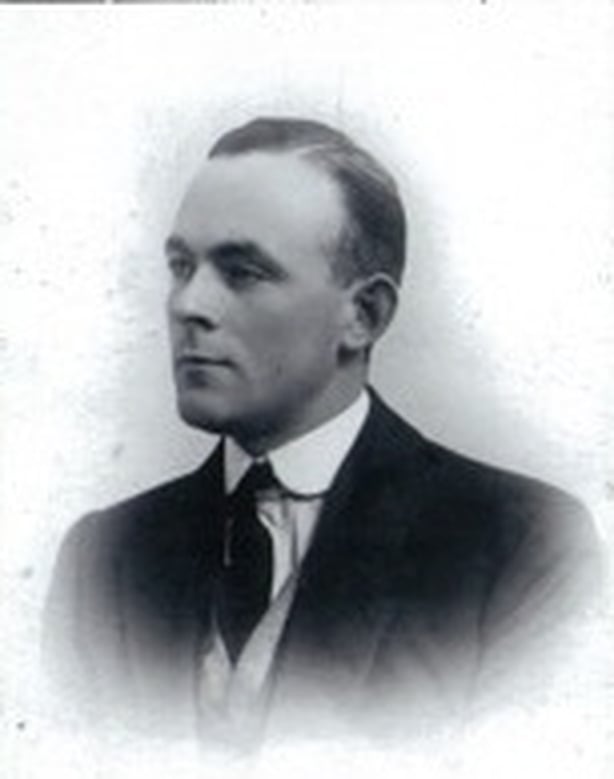As a child Michael Riordan wondered about the portrait of a young soldier in British uniform displayed in his family home. In the second part of our Family Histories series, he tells the story of two brothers in arms who met different fates in World War I.
The bus came to a halt as we reached O'Connell Bridge early on a March morning in 1966. Our route ahead was blocked as granite rubble lay strewn around the stump of what a day before had been Nelson’s Pillar. Someone felt it seemed that he should not oversee the upcoming Golden Anniversary parade for the 1916 Rising. A month later throngs of onlookers fell silent as the Proclamation declaring a Republic was read aloud on the steps of the General Post Office. My father and I watched the soldiers, sailors and air corps men march past. In school I enquired if we had won the Rising? The teacher told me to ask my parents.
Who then was the young soldier in the portrait on our upstairs landing? "Uncle Edward ", my mother explained. "He was killed by the Turks in the Great War and is buried in the Mount of Olives." It was important information recounted with reverence - but it looked like the man was wearing an English uniform.

In Secondary School we learned about the Irishmen who had marched off to save Catholic Belgium from the Hun or to defend Ireland while we waited for Home Rule. It wasn’t just twenty-year-old Limerick man 2nd Lieutenant Edward Foran, Royal Munster Fusiliers, who answered the call. In fact his older brother John had gone before him.
My grandfather was a draper, like his father, with a shop on Williams Street, Limerick. Private John Foran, a Catholic, served in France. In 1916 he was at the Battle of the Somme where as an artillery man amidst the concussing noise and stench of cordite his duty was to rain down misery on the enemy while under fire himself.
At the same time a world away a young protestant woman, a farmer’s daughter from Borris-in Ossary, Co. Laois, had finished her education in a boarding school in Yorkshire. While others went back home to their families she decided to remain in England and volunteered to grow food for the troops. Violet Bennett became one of the first to enlist as a Land Girl.

Ninety-nine-year-old Peggy, John’s daughter, still living in her Dublin home, recalls the ailments her father had borne for 30 years after the Armistice: hearing problems, bad feet, and nerves. But he had come home and gone back to the family business. In contrast his brother Edward’s portrait and his medals had to sustain his memory in the Foran family.
The centenary of the Battle of the Somme, where twenty thousand British soldiers were killed on the first day alone was in 2016. A visit to the War Memorial Park at Islandbridge on the Liffey with its book listing all the dead Irish soldiers from the war to end all wars completed our commemoration of the events of 1916.
On the 28th December 1917 as the Turks tried to recapture Jerusalem having been ousted earlier in the month. 2nd Lieutenant Edward Foran was ordered to take ground designated as Machine Gun Hill with his unit. After bloody fighting he and they succeeded, but at the cost of his own life. His commanding colonel wrote to his mother Margaret that he was one of his best officers and was very popular with his peers. Margaret placed a notice in the Limerick Chronicle thanking everybody for their kind telegrams of condolence.

Private John Foran, her other son, came back from France. On a holiday in Killarney he met Violet Bennett. They had both been away from home in 1916 and returned to an Ireland with a new destiny but it seemed only one past. John and Violet made a match for themselves that was to last beyond the next great world conflict.
Do you have a story to tell about your own family's experience of significant historical events? Find out how to contribute it here.
The views expressed here are those of the author and do not represent or reflect the views of RTÉ










































